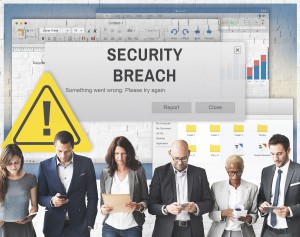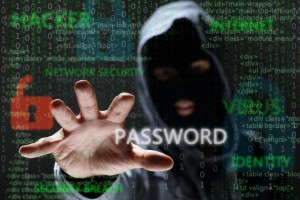 People use computer servers at home for a variety of practical reasons. Usually, they use it to provide a central location for all the computers and media devices in the home to access files like music, movies, access the internet, and connect to the wireless printer. Since most home networks are connected to the Internet, you always have to make sure your server is constantly protected against threats from hackers.
People use computer servers at home for a variety of practical reasons. Usually, they use it to provide a central location for all the computers and media devices in the home to access files like music, movies, access the internet, and connect to the wireless printer. Since most home networks are connected to the Internet, you always have to make sure your server is constantly protected against threats from hackers.
A hacker is…
Hackers are unsavory folks that sit at their computer and think of ways to get your personal information. It’s not like it was back in 1995, where you needed a password, hard-wire access, and a 28.8 bps modem like you did in Hackers-the movie– now, it’s all about people that can get into your wireless network, computers, and even your phone in minutes- usually without you knowing at all.
These hackers range from vandals who deface websites and delete data, to identity thieves and stalkers- organized groups can use hijacked computers to store illegal files or use the combined computing power to launch attacks on other machines, companies, or individuals..
To prevent hackers from breaking into home servers, you have to be aware that people can, and will, use your personal information if they can get their hands on it. You have to use tried and tested protection on your computer, and most of all, it’s important to make your computer and your information a hassle to get at. There’s plenty of ways to protect yourself- here’s some tips.
How can you protect your information AND your network?
Step 1: Keep your computer up to date
 Regardless of the operating system you currently have, the first step to keeping your computer protected is to keep it up to date.
Regardless of the operating system you currently have, the first step to keeping your computer protected is to keep it up to date.
Yup, that means doing those painstakingly long system updates that are ‘required’.
The majority of the time, these updates really do help. Not only do they provide updates to bugs and issues that were discovered over time.
They also repair security and hacking vulnerabilities that a hacker could use to get into your system and cause havoc.
If you don’t like to wait, set your computer up to do updates in the middle of the night, or use the ‘update my system and turn my computer off’ option. That way, you’re locking down all the doors that are easy to get into.
Step 2: Use Virus Firewall Protection- and Scan Your System Regularly
 Installing virus protection and firewall software is an absolute necessity, even for the hardcore computer user. If you don’t have at least a firewall, you’re leaving your computer wide open for attack.
Installing virus protection and firewall software is an absolute necessity, even for the hardcore computer user. If you don’t have at least a firewall, you’re leaving your computer wide open for attack.
Anti-virus software will provide an immune system against viruses; although it is not perfect, it will prevent a lot of viruses from infecting the system. Keeping anti-virus software up to date is essential for keeping up with the latest potential infections.
Firewall software prevents many types of incoming hostile connections, as well as outbound connections from unauthorized software that may be running.
If a virus got past the anti-virus software, a firewall may be the last line of defense that stops the virus from transmitting information onto the Internet.
The process of selecting this software can be a task- you can get by with a free service.
If you’re not familiar with how to remove viruses or restore your system, it’s best to use a service that charges you an annual fee- or the service that is included with your internet service provider.
If you’re not sure if your internet company does, give them a call, or visit their website.
Once you have your security installed, you need to be sure to schedule regular updates (see step 1) and make sure your scan your computer for viruses and malware regularly. There’s hundreds of these to choose from- be sure to pick one that fits your understanding and familiarity with computers.
Now that you’ve got the baseline protection for your system, you need to be sure to install some protection for when you’re browsing the internet.
Step 3: Protect your internet browsing and Emails
 There’s too many ways that hackers can infect your system with a virus- here’s 10 ways, but the most common are usually internet browsing, clicking on popups, and attachments and/or links in an unsolicited email.
There’s too many ways that hackers can infect your system with a virus- here’s 10 ways, but the most common are usually internet browsing, clicking on popups, and attachments and/or links in an unsolicited email.
What’s the best way to protect you and your family from viruses?
- Monitor your internet browsing. Look at internet history, and try to avoid websites with questionable content or a lot of popups. That includes any websites about hacking, piracy, and other sites that shan’t be named.
- Only open emails that come from people you know or companies your have allowed. Use youre email system’s spam protection and make sure to clean out your inbox regularly.
- Essentially, if it feels like something’s wrong when you’re browsing the internet, it probably is.
Most virus protection services offer this protection as well- make sure it’s enabled, and keep to sites you know. If you have your virus and firewall set up properly, it will catch something you might not- IF it isn’t allowed by the user.
Step 4: Use a good Password
 If you’re using a wireless network, use a strong, complex password. Preferably not your address. Or your birthday or your name. Or 123456. Or any of these most commonly used passwords.
If you’re using a wireless network, use a strong, complex password. Preferably not your address. Or your birthday or your name. Or 123456. Or any of these most commonly used passwords.
Passwords are a part of life now- and the only way to protect your home network, your computer, your bank accounts, and any other online accounts from being exploited. So how do you make it secure?
- Try and come up with a password that has at least 8 characters.
- Include special characters (@,$,&), numbers and upper and lower case letters
- Use a secure password generator
- Steer clear of something that someone could easily find through social media or public information
- Most importantly, the more critical the information you’re trying to protect is, the more complex your password should be. I use a 12 character password to protect my network…
*NOTE- these are just suggestions- keep in mind that this will help prevent things from happening, but no password is full-proof. If given time and motivation, you can be still be hacked. Use these tips as a guideline, and not an end-all-be-all solution. Think you have an uncrackable password? Use one of these tools to check!
It’s also important to change passwords on any critical account on a regular basis- the time frame is really up to you. Most businesses recommend a password change every 6 weeks.
Now that you have a secure password, you’re ready to move to the next phase.
Step 5: Secure your Network
 Every wireless newtork needs to be secured. No matter what. If you’re not sure how to do it, contact your internet provider, do a quick search online, or have a tech-savvy friend or relative turn it on for you.
Every wireless newtork needs to be secured. No matter what. If you’re not sure how to do it, contact your internet provider, do a quick search online, or have a tech-savvy friend or relative turn it on for you.
Not having your wireless protection enabled gives hackers the ability to use your computer AND your paid internet connection to their advantage. It also slows down your connection remarkably.
Make sure to see step 4 and pick a very secure password for your network.
Step 6: Everything Else!
Computer security is much like the never-ending conflict between the locksmith and the thief. Every new security measure presents new weaknesses for hackers to find and exploit. The most important tactic for stopping hackers is eternal vigilance on the part of the owner
This means not opening suspicious emails or visiting suspicious websites. In addition, one should never download software from untrusted sources. Under no circumstances should a user shut down their anti-virus or firewall software while connected to the Internet.
This list can on forever, but hopefully you now have some tips that will help protect you from people hacking your network, email, computer or server.
Get Free Quotes on Secure Personal Services Today!
Record Nations will help you find the right cloud solution that fits your needs. We have a network cloud storage and service professionals that provide reliable secure solutions for your business.
Our experts can help connect you with cloud storage professionals that will walk you through the tedious process of selecting the right service. Our cloud storage services will keep your records safe and easy to access.
To get started, fill out the form to the right, or give our experts a call at (866) 385-3706. Our team will help you find the right paperless solution for your business.
Want to learn more? Check out these links!
Protecting Your Computer and Identity
Clicking on this link will take the reader to a PDF document on protecting one’s computer from hackers and other malicious activity. The document explains why the computer must be protected and explains different types of attacks that hackers may launch against a network.
Cyber Security Awareness
This link will take the reader to an eleven-page PDF document on cyber security. The document reviews in detail the various ways that people can hack into computers and how people can protect their home or business computers from these intrusions.
Popular Mechanics: How to Stop Computer Viruses
This is a two-page article on preventing cyber-attacks from viruses, malware and other programs used by hackers. The article reviews the frequency of cyber-attacks and how quickly hackers adapt to certain security measures. The article then reviews the importance of proven and common sense security that people can apply to their home and business computers.
Protect Your Computer from Viruses, Hackers, and Spies
This article is found on the State of California Department of Justice Office of the Attorney General website. The purpose of the article is to review safety measures that will help protect home computers. Each safety measure is followed by a brief explanation.









